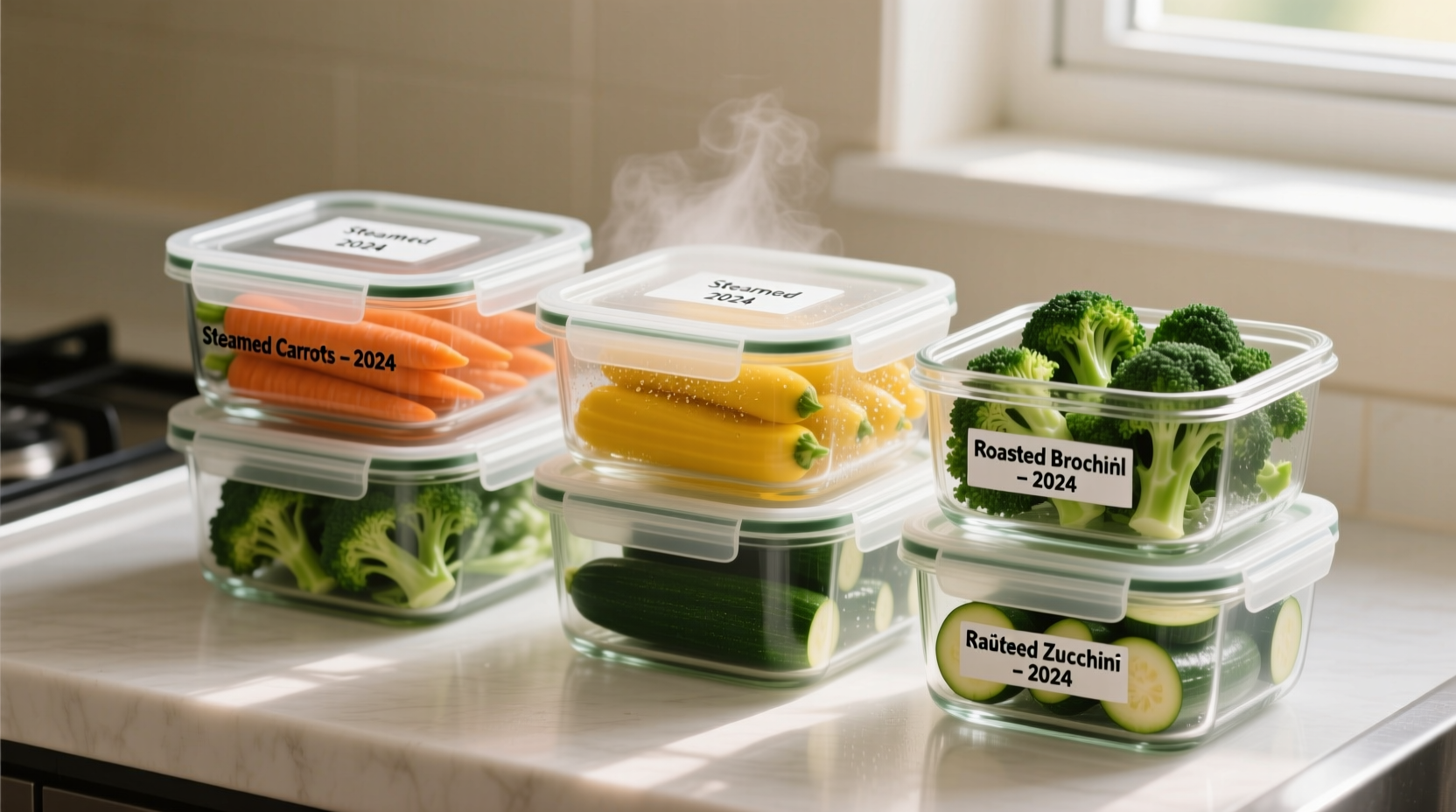Understanding exactly how long your cooked vegetables will stay fresh isn't just about avoiding food waste—it's a critical food safety practice that protects you and your family from potential foodborne illnesses. With proper storage techniques, you can maximize both safety and quality while minimizing unnecessary waste.
Why Proper Storage of Cooked Vegetables Matters
Consuming spoiled cooked vegetables can lead to foodborne illnesses caused by bacteria like Salmonella, E. coli, and Listeria. These pathogens often develop without obvious visual or odor changes, making strict adherence to storage guidelines essential. According to the USDA Food Safety and Inspection Service, cooked vegetables enter the "danger zone" (40°F-140°F) where bacteria multiply rapidly if not stored properly.
Cooked Vegetable Refrigeration Timeframes by Type
While the general rule is 3-4 days, specific vegetables have varying shelf lives based on their water content, density, and preparation method. The table below provides detailed guidance:
| Vegetable Type | Optimal Storage Time | Special Considerations |
|---|---|---|
| Leafy greens (spinach, kale) | 3 days | High moisture content accelerates spoilage; store in paper towel-lined container |
| Cruciferous (broccoli, cauliflower) | 4 days | Store in ventilated container to prevent moisture buildup |
| Root vegetables (carrots, potatoes) | 4-5 days | Slightly longer shelf life due to lower moisture content |
| Squash and zucchini | 3 days | High water content makes them spoil faster; avoid storing with onions |
| Starchy vegetables (corn, peas) | 4 days | Best stored in airtight containers to maintain texture |
Four Critical Factors That Impact Shelf Life
Several elements determine whether your cooked vegetables reach the maximum 4-day window or spoil prematurely:
1. Cooling Speed After Cooking
Immediately transferring cooked vegetables to shallow containers accelerates cooling and reduces time spent in the bacterial danger zone. The FDA Food Code recommends cooling food from 140°F to 70°F within 2 hours, and then to 40°F or below within an additional 4 hours.
2. Storage Container Selection
Airtight glass or BPA-free plastic containers maintain optimal humidity levels while preventing cross-contamination. Avoid storing in the original cooking pot, which doesn't provide proper sealing. For leafy greens, lining containers with paper towels absorbs excess moisture that accelerates spoilage.

3. Refrigerator Temperature Consistency
Regularly verify your refrigerator maintains 40°F (4°C) or below using an independent thermometer. The door shelves experience more temperature fluctuation than the main compartment, making them less ideal for cooked vegetable storage. The CDC recommends storing cooked foods on upper shelves away from raw meats.
4. Preparation Method Differences
Steamed vegetables typically last longer than boiled varieties due to lower water absorption. Roasted or sautéed vegetables with oil may develop rancidity faster, while acidic preparations (like vinegar-based dishes) often extend shelf life slightly.
Recognizing When Cooked Vegetables Have Spoiled
Don't rely solely on the calendar—always inspect before consuming. Warning signs include:
- Visible mold (even small spots mean discard the entire batch)
- Slippery or slimy texture
- Unpleasant sour or fermented odor
- Unusual color changes beyond normal oxidation
- Bubbling or visible liquid separation
When in doubt, throw it out. The USDA emphasizes that "when food safety is questionable, it's never worth the risk." This is especially critical for vulnerable populations including young children, pregnant women, older adults, and immunocompromised individuals.
Proven Techniques to Extend Freshness
Maximize your cooked vegetables' shelf life with these chef-approved methods:
Immediate Cooling Protocol
Spread cooked vegetables in a single layer on a baking sheet before transferring to storage containers. This rapid cooling method reduces bacterial growth during the critical cooling phase.
Moisture Management System
For high-water-content vegetables like zucchini or eggplant, place a folded paper towel in the container bottom and top before sealing. Replace the paper towel daily if storing beyond 2 days.
Freezing for Long-Term Storage
For extended storage beyond 4 days, freezing cooked vegetables preserves quality for 8-12 months. Blanch vegetables first, then spread in single layer on baking sheet before transferring to freezer bags with air removed. Label with contents and date.
Special Considerations for Meal Prep and Leftovers
If you regularly cook vegetables in bulk for meal prep, implement these safety practices:
- Divide large batches into single-serving containers immediately after cooking
- Store containers with at least 1 inch of headspace to accommodate potential expansion
- Reheat only the portion you'll consume to avoid repeated temperature fluctuations
- When reheating, ensure vegetables reach 165°F internally
Remember that mixed vegetable dishes containing dairy, eggs, or meat have shorter shelf lives than plain cooked vegetables. Always follow the shortest recommended timeframe among the ingredients.
Food Safety Timeline: What Happens After Cooking
Understanding the bacterial growth timeline helps reinforce why the 3-4 day rule exists:
- 0-2 hours post-cooking: Critical cooling period—must reach safe temperature
- 24 hours: Bacterial colonies begin forming if stored improperly
- 48 hours: Visible quality degradation may begin
- 72 hours: Significant bacterial growth increases illness risk
- 96+ hours: High risk of foodborne illness even if no visible spoilage











 浙公网安备
33010002000092号
浙公网安备
33010002000092号 浙B2-20120091-4
浙B2-20120091-4